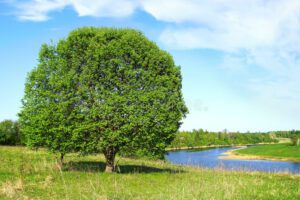Property access is the right to use, occupy, or enter a parcel of land. This could include the right to drive, walk or access a road or any other structure on the property. The owner of the land can grant or restrict property access, depending on local laws and regulations.
A public road is one of the most popular ways to access vacant land. The government maintains public roads and they are usually open to the general public. Accessing vacant land via a public road has the advantage that they are generally maintained and offer reliable transportation for all types of vehicles.
A private road is another common way to access vacant land. Private roads are maintained and owned by individuals and organizations, such as an HOA. Access may be restricted for certain groups. Accessing vacant land via a private road has the advantage of offering more privacy and security. Public roads are not as well maintained as private roads. This can cause problems with transportation and maintenance.
An easement is another way to access vacant land. This is the one that scares many people. An easement, a legal agreement that gives the owner of the land permission to use a particular portion of another person’s property for a specified purpose, is called a “legal agreement”. You can use easements to gain access to land that is otherwise inaccessible. Accessing vacant land via an easement can be a cost-effective way to gain access to land that might otherwise be impossible or difficult.
A right-of-way agreement is another way to access vacant land. A right-of way easement is a particular type of easement. It is usually an appurtenant and runs alongside the land. However, all rights-of-way can be considered easements. A right-of way easement is a legal agreement giving the owner of the land permission to use a particular portion of another person’s property for transportation purposes. You can use rights-of-way to gain access to land that is otherwise inaccessible.
It’s important to mention that access can be made by other means than roads. These include boat, water and air access. Access by boat may be required for land located near water bodies such as rivers, lakes, or oceans. Access by air may be necessary for land in remote and difficult-to-reach places. Although these accesses can be more costly and difficult to establish, they may offer unique opportunities for land development and use.
It is considered landlocked if there is no access to the land. A landlocked property is one that does not have a right-of-way or legal easement to a public road. This means it cannot be reached without crossing other private property (trespassing). This can make it more difficult or impossible for land owners to use the land or develop it. It can also lower the property’s value. A local real estate lawyer can help you determine if easements are possible if you’re considering buying land. There are several steps to legal access to landlocked properties. It is wise to listen to their legal advice and stop trying to pursue a property. Access falls under three categories in general: public access (deeded access), undeeded access (undeeded access).
Public Access Property that touches a road maintained by the government is open to the public. You don’t need to cross any other property to reach yours if there’s public access.
A deeded access is a legally-established right-of-way, or easement, that has been specifically described and recorded within the deeds for a specific piece of land. This type of access is usually granted by the landowner and is considered a permanent, binding right.
Uneeded access refers to a right of way or easement that is not specifically described in the property records. This type of access can be based on long-standing usage, custom, or an implied agreement, but is not always a legal right. It may be harder to prove or enforce undeserving access in court.
Anyone looking to buy or develop land should be able to understand the different access. The easiest and most reliable way to access vacant land is via public roads. However, private roads, easements and rights-of-way, as well as alternative access methods such as boating or air access, are all viable options. This depends on the particular circumstances of the land.
A careful consideration of all access options can make it easier to purchase land.
Original Blog: https://www.landthink.com/everything-you-need-to-know-about-property-access-part-1/


Leave a Reply